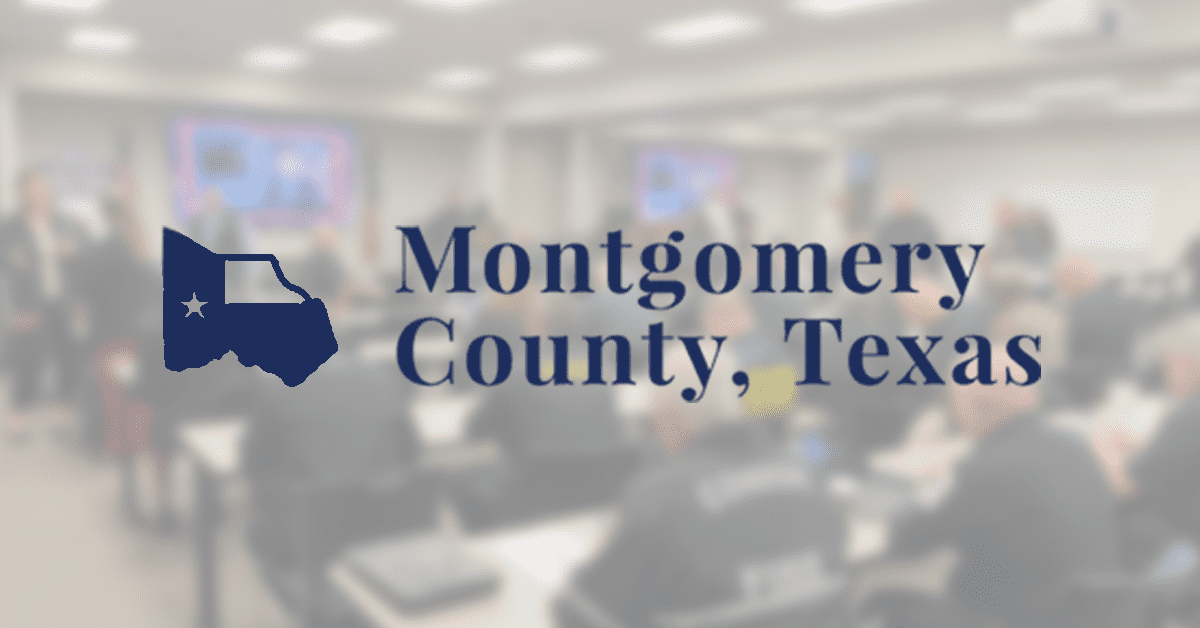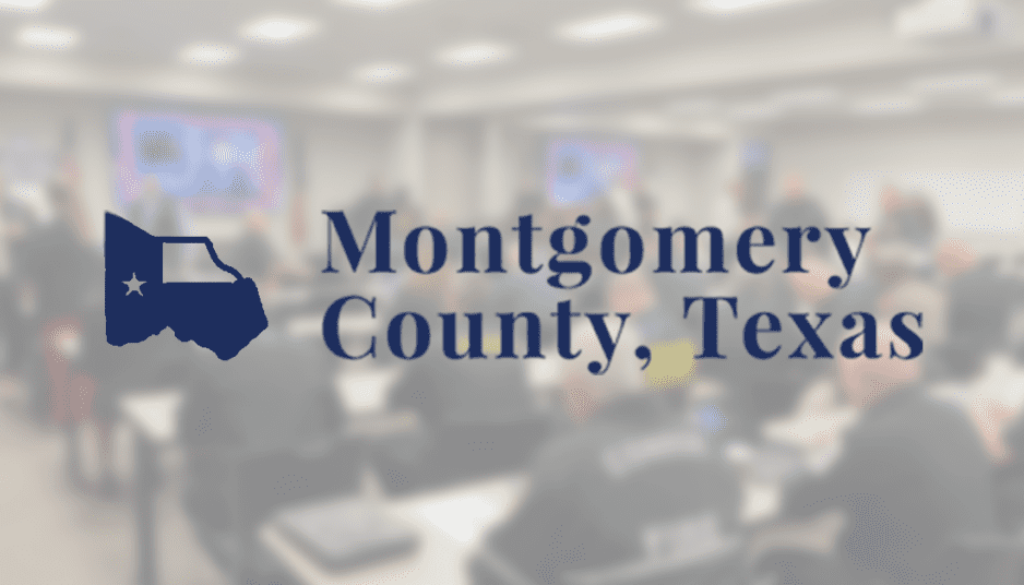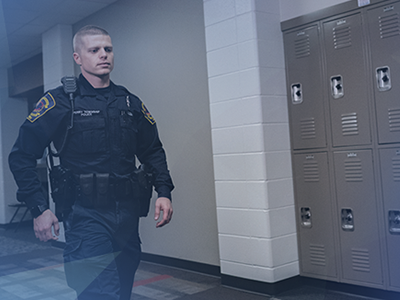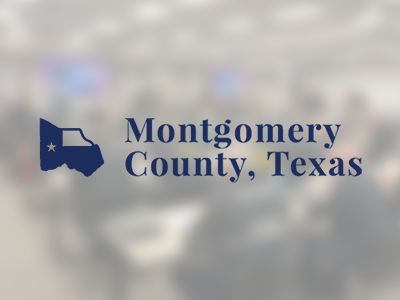Better Communication Leads to Faster Emergency Response Times and Safer Communities in Texas
Customer Success Story
Better Communication Leads to Faster Emergency Response Times and Safer Communities in Texas

Andrea Shepard,
Associate Director
Montgomery County Emergency Communication District
Industry
Challenges Solved
Customer Details
Montgomery County, TX has a population of around 650,000 residents. It is a major population center for people commuting to and from work in the Greater Houston area.
Solution
When Hurricane Harvey made landfall in Texas and Louisiana in August 2017, it caused catastrophic flooding, more than 100 deaths and $125 billion in damage. Cell service in Montgomery County, Texas was unavailable in many places, but data was still working. In the middle of the crisis, citizens in the flood zone were desperate for information.
When natural disasters or other catastrophic events occur, where do you turn for information? How do you know about emergencies that are unfolding in your community?
Replacing a Cumbersome Emergency Alert System
A half-hour north of Houston sits Montgomery County, a thriving community that is home to around 650,000 residents. We are a major population center for people commuting to and from work in the Greater Houston area.
As the associate director of the Montgomery County Emergency Communication District, I partner with five 9-1-1 call centers. Our sheriff’s office is one of two primary emergency call centers, taking 79% of the call volume and managing dispatch for 28 smaller agencies. We also have three smaller secondary call centers. In 2023, our district fielded 900,358 incoming calls.
Before working in emergency communications, I spent 17 years working as a teacher and education specialist in Georgia’s Fulton County School District. Given my teaching background, I fully understand the importance of raising community awareness about emergency services and educating residents about coordinated communications when disasters strike.
When I first joined the district, we had a cumbersome emergency alert system that required our teams to create and send alerts manually. Signing up for alerts was also tedious for community members. The system wasn’t serving our call centers or residents as well as it could, so we started looking at alternative mass notification solutions.
Motorola Solutions’ Rave Mobile Safety emerged as a top contender, primarily for Rave Alert. The platform was much easier for call centers to use, allowing us to send an emergency alert via text, email, desktop, voice, public address systems, social media and digital signage in just three clicks. Rave Alert also integrates with the Rave 911 Suite of emergency response solutions, which was still in its infancy at the time but would become more useful to our county later down the road.
We presented a case for deploying Rave Alert to call center supervisors and managers, who play a key role in the decision-making process. It was essential to get their buy- in because they are the daily users, and even though the Montgomery County Emergency Communication District funds the technology, these frontline workers choose the tools. They saw the benefit immediately and we proceeded with onboarding.
An Enhanced Ability to Respond to Unfolding Emergencies
Today, our police department, sheriff’s office and the Office of Homeland Security and Emergency Management all use Rave Alert to send notifications, although we limit the type of alerts sent to prevent alert fatigue. These agencies also use Rave Alert internally to contact administrative staff, field officers and other resources that can’t be accessed directly through our call centers, including the SWAT and K-9 units. The Rave Alert administrators for each agency can create a call list that allows them to contact the appropriate stakeholders and forward important incident details at the press of a button.
A couple of years after adopting Rave Alert, we revisited Smart911, which is part of the Rave 911 Suite. Smart911 is a profile-based, opt- in app that protects more than 66 million people nationwide. It allows community members to complete a profile with relevant information that might be useful to 9-1-1 call handlers and first responders in an emergency. Smart911 integrations allow us to send timely emergency alerts and enable two-way texting between 9-1-1 call takers and those seeking help. Text capabilities are critical today.
Rave Mobile Safety tools have enhanced our call centers’ ability to respond to unfolding emergencies by giving us new ways to communicate with citizens in distress. We saw a dramatic example of Smart911’s value unfold during an abduction situation. A woman’s daughter called 9-1-1 to report that her mother had been abducted and gave us her mother’s cell number. We then texted the woman, who was in the back of a car headed toward Montgomery County. While she couldn’t speak to us, she managed to drop pins and share her location. Because of that timely, targeted data, we were able to dispatch a cruiser to intercept the vehicle, thwart the abduction and reunite the woman with her daughter.
We also now have an automated text message that we send out if a caller dials 9-1-1 and hangs up. Most callers won’t respond if you call them back because they don’t recognize the call center number or think they’re in trouble. But an automated text message asking them to call or text back if they need help yields a response 75% of the time. Opening a new line of communication is a small change that is making a big difference to the people we serve.
We saw that our dispatchers had a bit of hesitation when we began using Smart911, especially when it came to using the chat feature. I put on my educator hat and thought about how I would inspire students. Everyone loves an incentive, so I ran a contest: if a dispatcher used the text feature to follow up on a call 10 times, they won a gift card. The person who used the feature the most across all our call centers won a prize at the end of the month.
The contest was a success and users became more comfortable with the platform. More importantly, we confirmed that callers responded to chats more often than callbacks and learned that sending a text message took less time than leaving a voicemail. Once our dispatchers saw how the platform helped them be more effective and efficient in their roles, we got much less resistance.
“Rave Mobile Safety tools have enhanced our call centers’ ability to respond to unfolding emergencies by giving us new ways to communicate with citizens in distress.”
ANDREA SHEPARD
ASSOCIATE DIRECTOR
MONTGOMERY COUNTY EMERGENCY COMMUNICATION DISTRICT
Securing Schools with Rave Panic Button
The next step in our county’s safety journey centered around Rave Panic Button. With that solution, we saw tremendous potential to eliminate any confusion at our dispatch centers when receiving calls from area schools. School emergency calls no longer come from different platforms. Instead, school personnel use Rave Panic Button to swiftly summon help, making it easier for dispatchers to answer and assign the appropriate resources.
I first proposed Rave Panic Button after the 2018 school shooting in Santa Fe, New Mexico. I brought together law enforcement, other first responders, the Office of Homeland Security and Emergency Management and school district officials to discuss its implementation. They were all excited about the project, but it moved to the back burner, as often happens when the memory of a tragedy fades. The issue arose again after the 2022 shooting in Uvalde, Texas that left 21 dead. This time, we were ready to take action and rolled out the solution for the start of the 2023–2024 school year.
It was a top-down deployment. The Montgomery County Emergency Communication District made a decision to help in funding the project for three years, and we invited Rave to do a Panic Button presentation for school district officials. This time, we had momentum on our side. Our county was ahead of new Texas legislation that requires panic buttons in all classrooms beginning with the 2025–2026 school year. We are encouraged that students, educators, 9-1-1 professionals, and responders across the state will soon have access to the same or similar school safety technology.
“Although active shooter situations get the most attention, schools use Rave Panic Button most frequently for medical emergencies.”
ANDREA SHEPARD
ASSOCIATE DIRECTOR
MONTGOMERY COUNTY EMERGENCY COMMUNICATION DISTRICT
Although active shooter situations get the most attention, schools use Rave Panic Button most frequently for medical emergencies. Our largest school district, which is the seventh largest in the state of Texas, experienced such a crisis on the first day of school this year when a player collapsed during football practice. The school nurse sent out an internal alert and contacted 9-1-1. We dispatched an EMS team immediately and the boy received the needed care.
The proof, as they say, is in the pudding. As it turned out, the student’s father is the director of Montgomery County’s Office of Homeland Security and Emergency Management and he saw its effectiveness firsthand. As the use of Rave Panic Button spreads across our state, I plan to assemble a user group to exchange success stories, leverage best practices and share data related to the Rave products that we use in the interest of safety.
A Robust Product Suite Keeps Our Community Prepared
Although Rave Alert, Panic Button and Smart911 are our core emergency response platforms, our ecosystem includes other solutions from the safety leader, too. One of these is Motorola Facility, a tool that allows commercial properties, schools, retail outlets and other establishments to share floor plans, entry codes and other details about their properties with emergency responders—details such as the location of water or gas shut off valves. When someone in an educational setting pushes the Rave Panic Button app, school personnel and 9-1-1 dispatchers are immediately notified about an emergency. At the same time, site plans automatically pop up on an emergency call handler’s screen so that first responders can take immediate action once they arrive on scene. Speed and situational awareness are essential to emergency response and Motorola Facility provides important site-specific details.
Montgomery County also uses Rave Prepare to geotarget certain areas in our jurisdiction during a crisis. The technology allows us to draw a circle around a particular neighborhood or city and determine how to prioritize areas and deliver assistance to those most at risk during an emergency. For example, 9-1-1 telecommunicators may dispatch emergency responders to evacuate someone who’s bedridden, deliver an oxygen tank to someone with a lung disease or install an emergency generator for a home dialysis machine during natural disaster or severe weather. Schools and emergency communications districts can use Rave Prepare to establish a perimeter so that if any crime or dangerous activity is happening in the vicinity of an educational facility, that school can go into lockdown mode.
Our success with emergency response solutions partly depends on the public. After all, we all play a role in safety. Like insurance policies, people often don’t think of emergency preparedness until a crisis is imminent. We hope to increase awareness so everyone in our county is ready when disaster strikes. We launched an awareness campaign promoting Smart911, but we really saw registrations take off during Hurricane Harvey. We can go long stretches without any major incidents that warrant emergency alerts, but we’re working to consistently remind the public that the county has tools in place to protect them.
“Like insurance policies, people often don’t think of emergency preparedness until a crisis is imminent. We hope to increase awareness so everyone in our county is ready when disaster strikes.”
ANDREA SHEPARD
ASSOCIATE DIRECTOR
MONTGOMERY COUNTY EMERGENCY COMMUNICATION DISTRICT
Working with a Responsive and Transformative Vendor
A manager at one of our largest call centers has been with us for 31 years and she likes to tell stories about life before we had this technology at our fingertips. She explains that call handlers used to rely on a rotary “bat phone” like in the old Batman television series. Then the dispatcher would have to write down information by hand on paper – bear in mind, some rural homes didn’t even have addresses. Fortunately, it’s not like that anymore. Today, dispatchers have the technology to obtain exact caller locations and anything else a caller might have shared in their Smart911 profile. Technology helps get people in need the right help faster.
The Rave team has been incredibly responsive during this journey. They are true partners and excellent listeners who seek honest feedback, including constructive criticism. They then incorporate that feedback into their products. It’s refreshing to work with a vendor who’s invested in designing tools that better serve customers. Our emergency communications systems continue to improve because they listen, learn and iterate.
Rave’s product suite has transformed how we handle emergencies and has allowed our citizens to become active participants in their safety and security. We now have a two-way flow of information between first responders and the communities we serve. With these safety solutions, Montgomery County Emergency Communication District has accelerated our response times, streamlined internal communications and taken community outreach to an entirely new level.
More From Rave Mobile Safety
Talk With An Expert
Discover our prepackaged solutions or configure a package that’s right for your community, company, K-12 schools and higher education system. Learn how you can be up and running in days, take advantage of unlimited emergency usage, and benefit from unbeatable performance and customer satisfaction.




